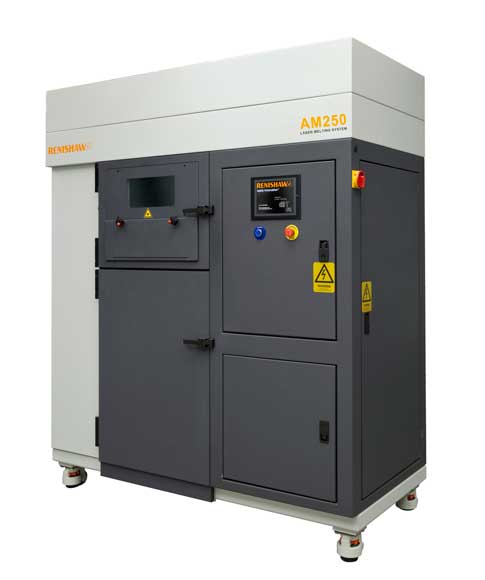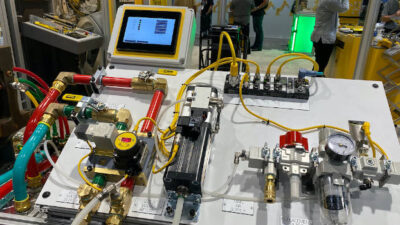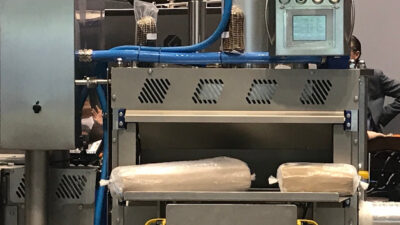IMTS 2012: Two new Renishaw additive manufacturing systems are designed for rapid material changeover and low cost of ownership. Fully welded vacuum chamber and ultra-low oxygen content in build atmosphere allow processing of reactive materials, including titanium and stainless steel. Both use "machine tool" engineering in design, operation, and serviceability, emphasizing ruggedness and ease of operation.

The current range of machines uses a third-generation design representing state-of-the-art manufacturing technology. Key features include variable powder delivery, ultra low oxygen content in the build atmosphere, and an unparalleled safe-change filter system to minimize user contact with materials.
Renishaw additive-metal systems process a wide variety of materials, including 316L and 17-4PH SS, H13 tool steel, aluminum Al-Si-12, titanium CP, Ti-6Al-4V and 7Nb, cobalt-chrome (ASTM75), and Inconel 718 and 625. Both systems are designed for rapid material changeover, with the AM125 using a cassette type materials delivery system and the AM250 a removable hopper – particularly useful for materials development or use of a range of materials. To enhance productivity, a valve interlock on the AM250 allows addition of extra powder while the process is running. Safe processing of reactive materials, such as titanium and aluminum, is ensured with features such as a gas knife that clears away reactive, sooty emissions, and a heated build plate.
All file preparation is completed off-line through a choice of interface, either Marcam Autofab software or Materialise Magics. Once complete, the build file is uploaded to the machine via a secure network or direct connection. Product traceability has been improved by the addition of process data and event logging as standard, the company said, with various additional process control options on request.
– Edited by Mark T. Hoske, content manager CFE Media, Control Engineering and Plant Engineering, [email protected].



